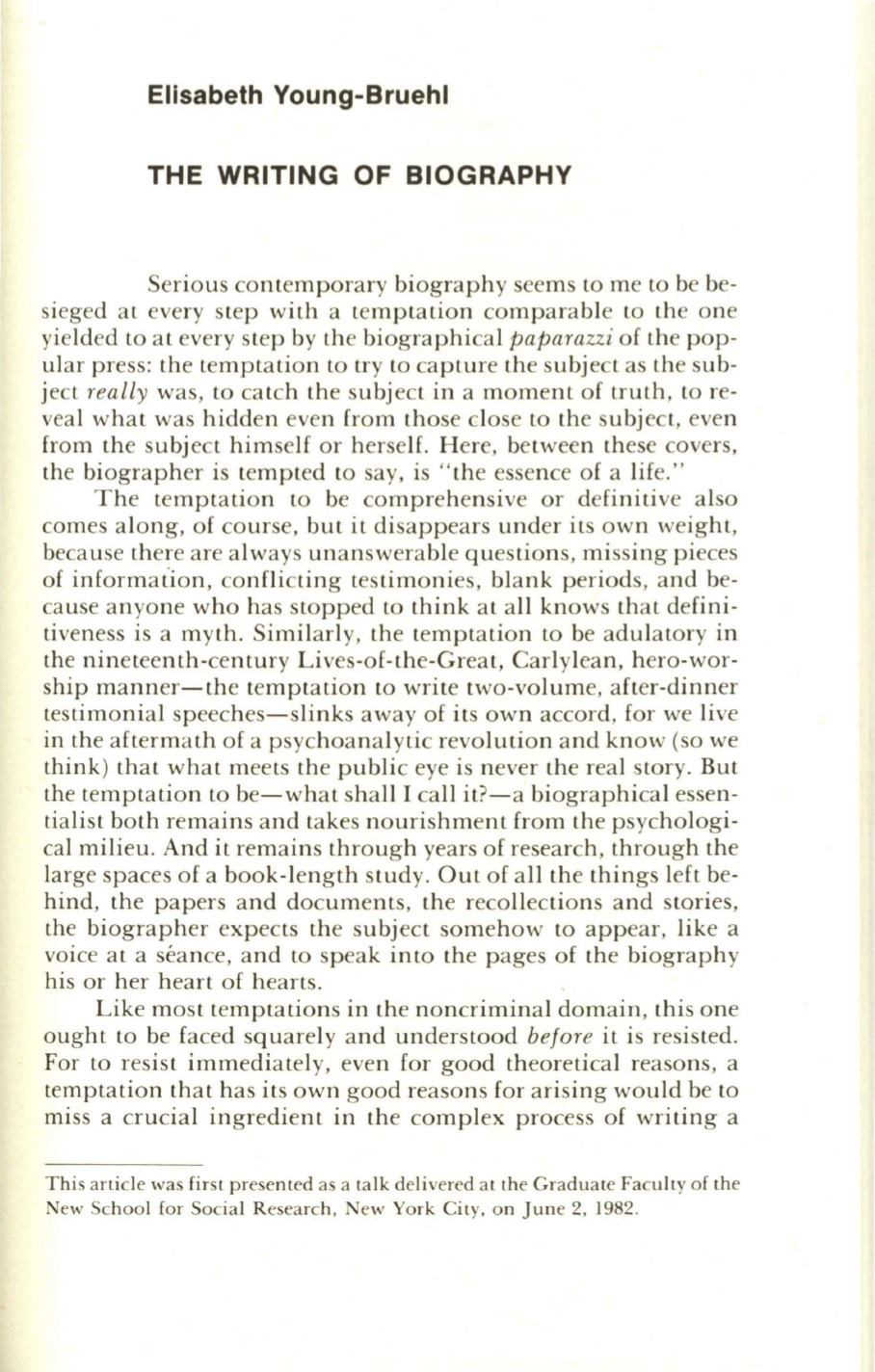
Elisabeth Young-Bruehl
THE WRITING OF BIOGRAPHY
Serious contemporary biography seems to me to be be–
sieged at every step with a temptation comparable to the one
yielded to at every step by the biographical
paparazzi
of the pop–
ular press: the temptation to try to capture the subject as the sub–
ject
really
was, to catch the subject in a moment of truth, to re–
veal what was hidden even from those close to the subject, even
from the subject himself or herself. Here, between these covers,
the biographer is tempted to say, is " the essence of a life."
The temptation to be comprehensive or definitive also
comes along, of course, but it disappears under its own weight,
because there are always unanswerable questions, missing pieces
of information, conflicting testimoni es, blank periods, and be–
cause anyone who has stopped to think at all knows that defini–
tiveness is a myth. Similarly, the temptation to be adulatory in
the nineteenth-century Lives-of-the-Great, Carlylean, hero-wor–
ship manner-the temptation to write two-volume, after-dinner
tes timonial speeches-slinks away of its own accord, for we live
in the aftermath of a psychoanalytic revolution and know (so we
think ) that what meets the public eye is never the real story. But
the temptation to be-what shall I call it?-a biographical essen–
tialist both remains and takes nourishment from the psychologi–
cal milieu. And it remains through years of research , through the
large spaces of a book-length study. Out of all the things left be–
hind, the papers and documents, the recollections and stories,
the biographer expects the subject somehow to appear, like a
voice at a seance, and to speak into the pages of the biography
his or her heart of hearts .
Like most temptations in the noncriminal domain, this one
ought to be faced squarely and understood
before
it is res isted.
For to resist immediately , even for good theoretical reasons , a
temptation that has its own good reasons for arising would be to
miss a crucial ingredient in the complex process of writing a
This article was first presented as a talk delivered a t the Graduate Faculty of the
New School for Social Research, New York City, on June 2, 1982.


